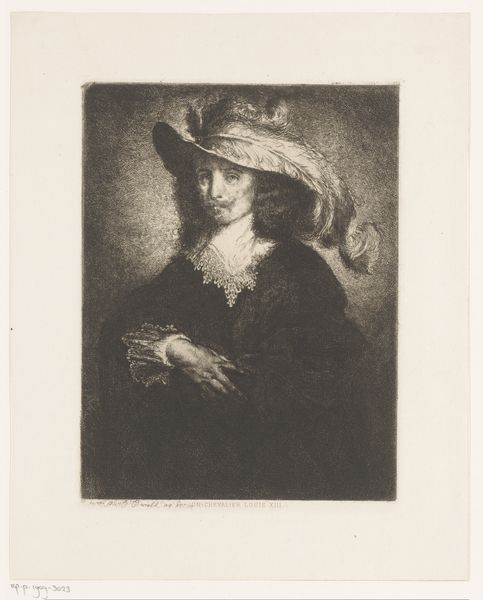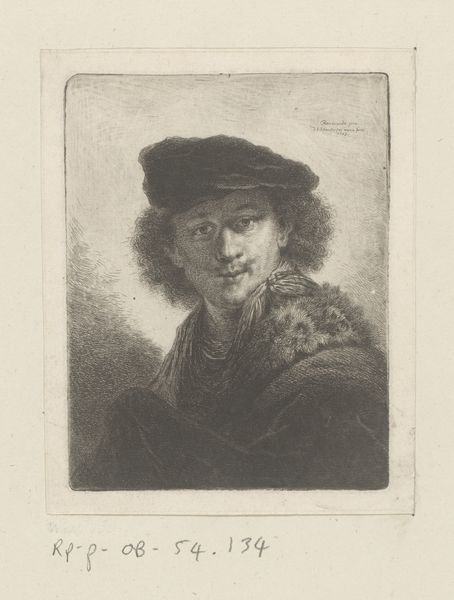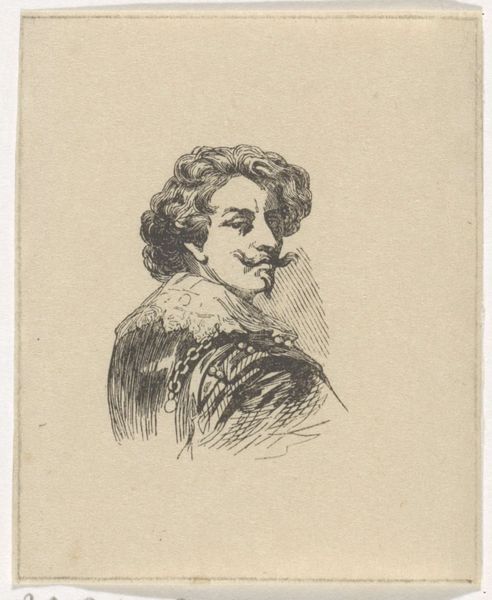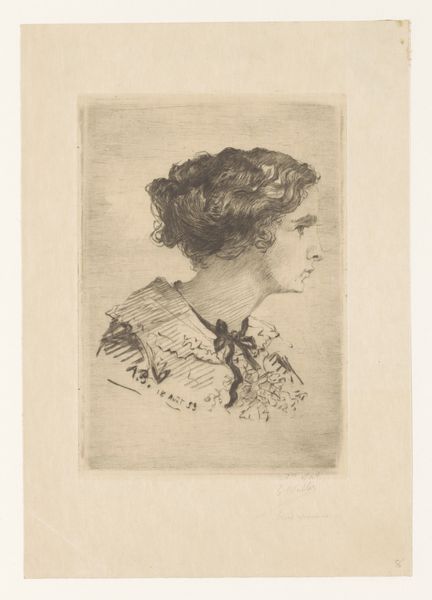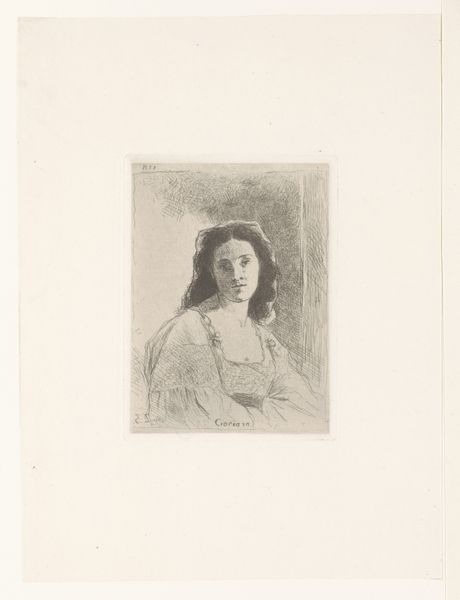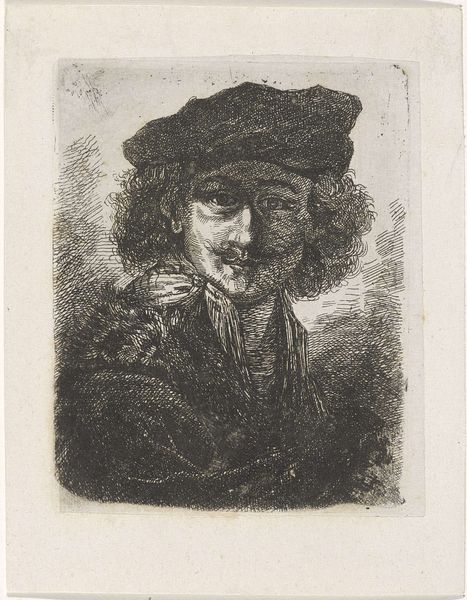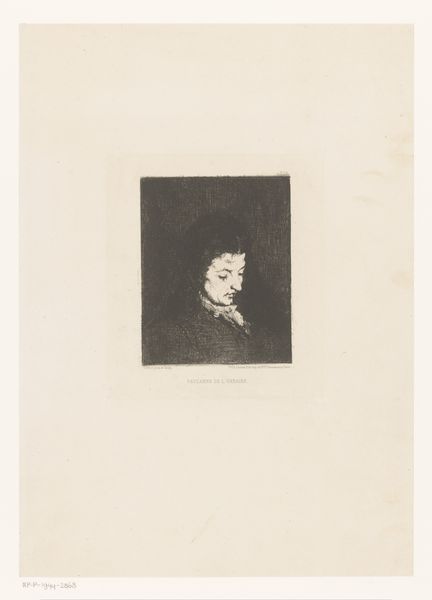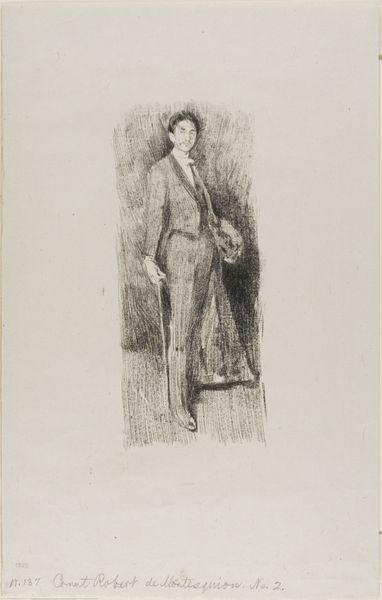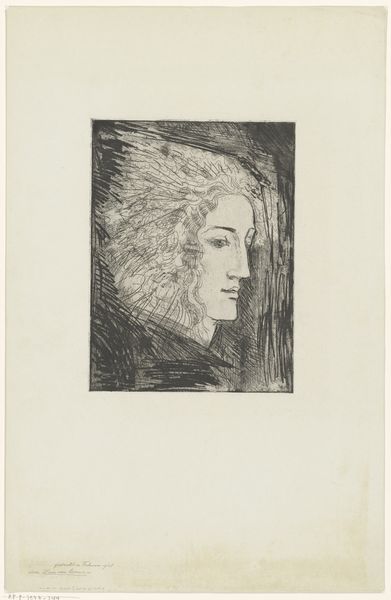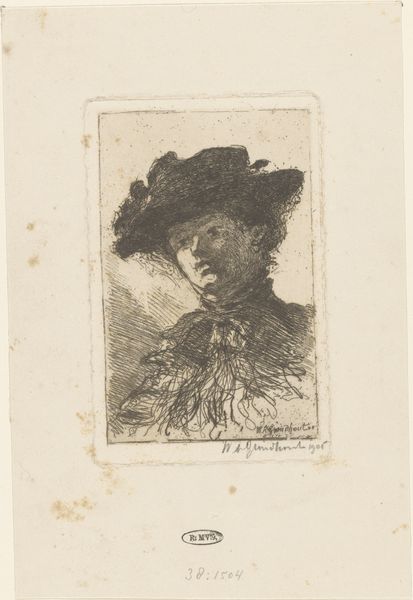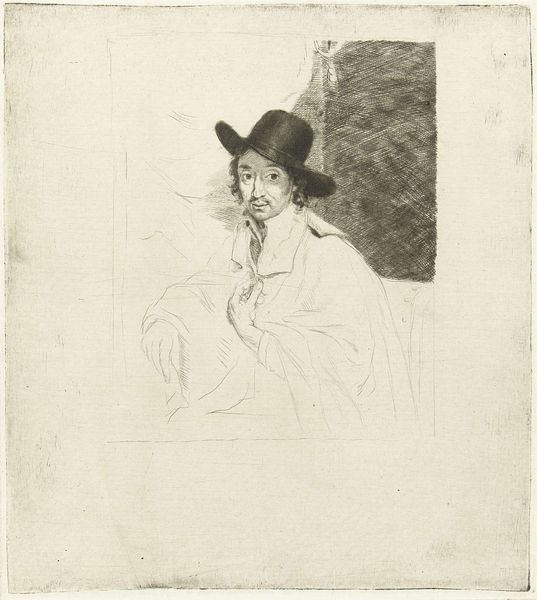
Dimensions: height 275 mm, width 198 mm
Copyright: Rijks Museum: Open Domain
This print of Jasper Schade van Westrum was made by Joseph Dujardin, using etching techniques on paper. The image is made through a labor-intensive process, where the artist applies a waxy ground to a metal plate, draws through it to expose the metal, and then immerses the plate in acid. The acid bites into the exposed lines, creating grooves that hold ink. Dujardin would have had to be skilled in both the chemical and artistic aspects of the process. After biting, the plate is inked, wiped clean, and then pressed onto paper. The pressure of the printing press forces the paper into the inked grooves, transferring the image. The resulting print has a tactile quality, with slightly raised lines that catch the light. The etching technique also allows for fine detail and subtle gradations of tone. The circulation of prints like this one played an important role in the distribution of images and ideas, connecting artists, artisans, and consumers in a network of cultural and economic exchange. Appreciating the work demands consideration of materials, making, and context.
Comments
No comments
Be the first to comment and join the conversation on the ultimate creative platform.
